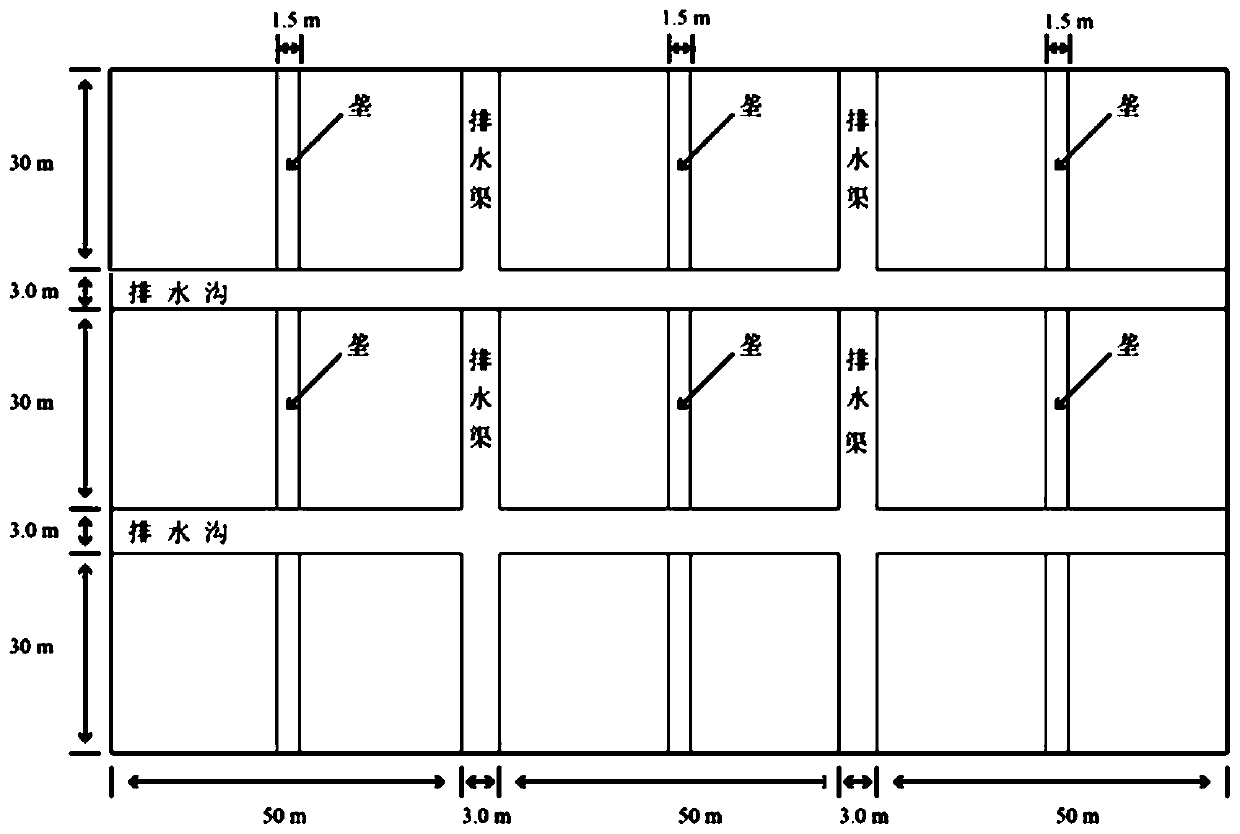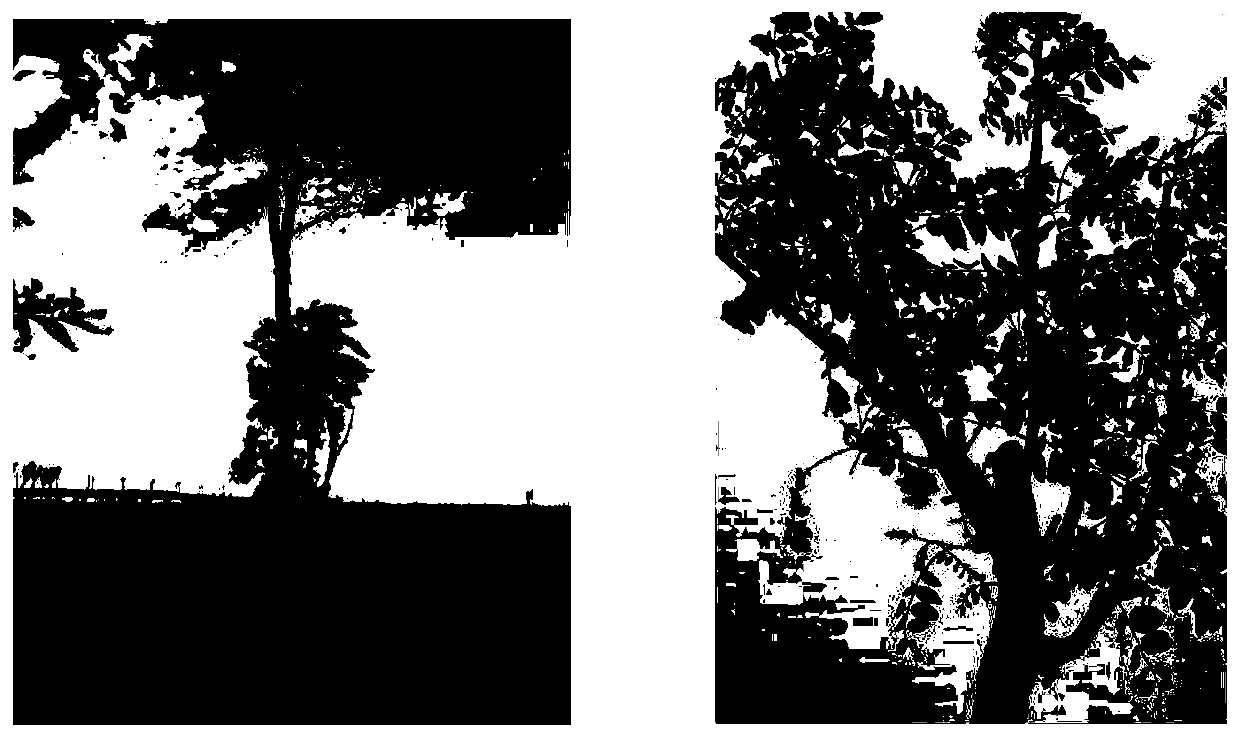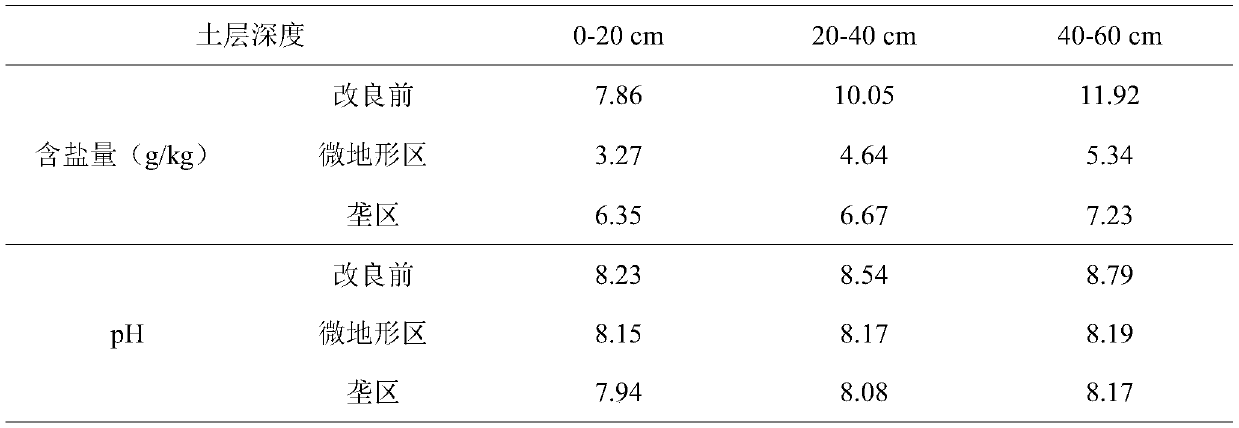Method for improving soil to plant arbors in severely-viscous saline-alkali land and application
A saline-alkali soil and soil improvement technology, applied in the field of saline-alkali landscaping, can solve problems that hinder landscaping and development, and achieve the effect of preventing soil return to salt
- Summary
- Abstract
- Description
- Claims
- Application Information
AI Technical Summary
Problems solved by technology
Method used
Image
Examples
Embodiment 1
[0025] The test site is located in Xuwei New District, southeast of Lianyungang City, Jiangsu Province; the soil plasticity index is 19, the content of particles with a particle size of less than 0.005mm is 40%, and the content of particles with a particle size of more than 0.075mm is 35%.
[0026] The tree planted is neem.
[0027] The method for improving and planting neem in severe sticky saline-alkali soil:
[0028] Ridging on the ground (ridge width 1.5m, ridge height 0.8m, ridge spacing is 50m), and drains are built at 50m intervals in the direction parallel to the ridges, with a depth of 1.0m and a width of 3.0m; drainage ditches are built at 30m intervals in the perpendicular direction to the ridges. The ditch is 0.8m deep, 3.0m wide, and the slope ratio is 1:1.5 (such as figure 1 As shown), it is connected with the surrounding water system to ensure that the drenching salt water can be discharged, and the excavated soil mound is placed on the surface to raise the mic...
Embodiment 2
[0033] The test site is located in Xuwei New District, southeast of Lianyungang City, Jiangsu Province; the soil plasticity index is 19, the content of particles with a particle size of less than 0.005mm is 40%, and the content of particles with a particle size of more than 0.075mm is 35%.
[0034] The tree planted is black locust.
[0035] The method for improving and planting Robinia pseudoacacia in severe sticky saline-alkali soil:
[0036] Ridging on the ground (ridge width 1.5m, ridge height 0.8m, ridge spacing is 50m), drains are built at intervals of 50m in the direction parallel to the ridges, with a depth of 1.0m and a width of 3.0m; drainage ditches are built at 30m in the direction perpendicular to the ridges. 0.8m deep, 3.0m wide, slope ratio 1:1.5 (such as figure 1 As shown), it is connected with the surrounding water system to ensure that the drenching salt water can be discharged, and the excavated soil mound is placed on the surface to raise the micro-topograp...
PUM
| Property | Measurement | Unit |
|---|---|---|
| Plasticity index | aaaaa | aaaaa |
Abstract
Description
Claims
Application Information
 Login to View More
Login to View More - R&D
- Intellectual Property
- Life Sciences
- Materials
- Tech Scout
- Unparalleled Data Quality
- Higher Quality Content
- 60% Fewer Hallucinations
Browse by: Latest US Patents, China's latest patents, Technical Efficacy Thesaurus, Application Domain, Technology Topic, Popular Technical Reports.
© 2025 PatSnap. All rights reserved.Legal|Privacy policy|Modern Slavery Act Transparency Statement|Sitemap|About US| Contact US: help@patsnap.com



